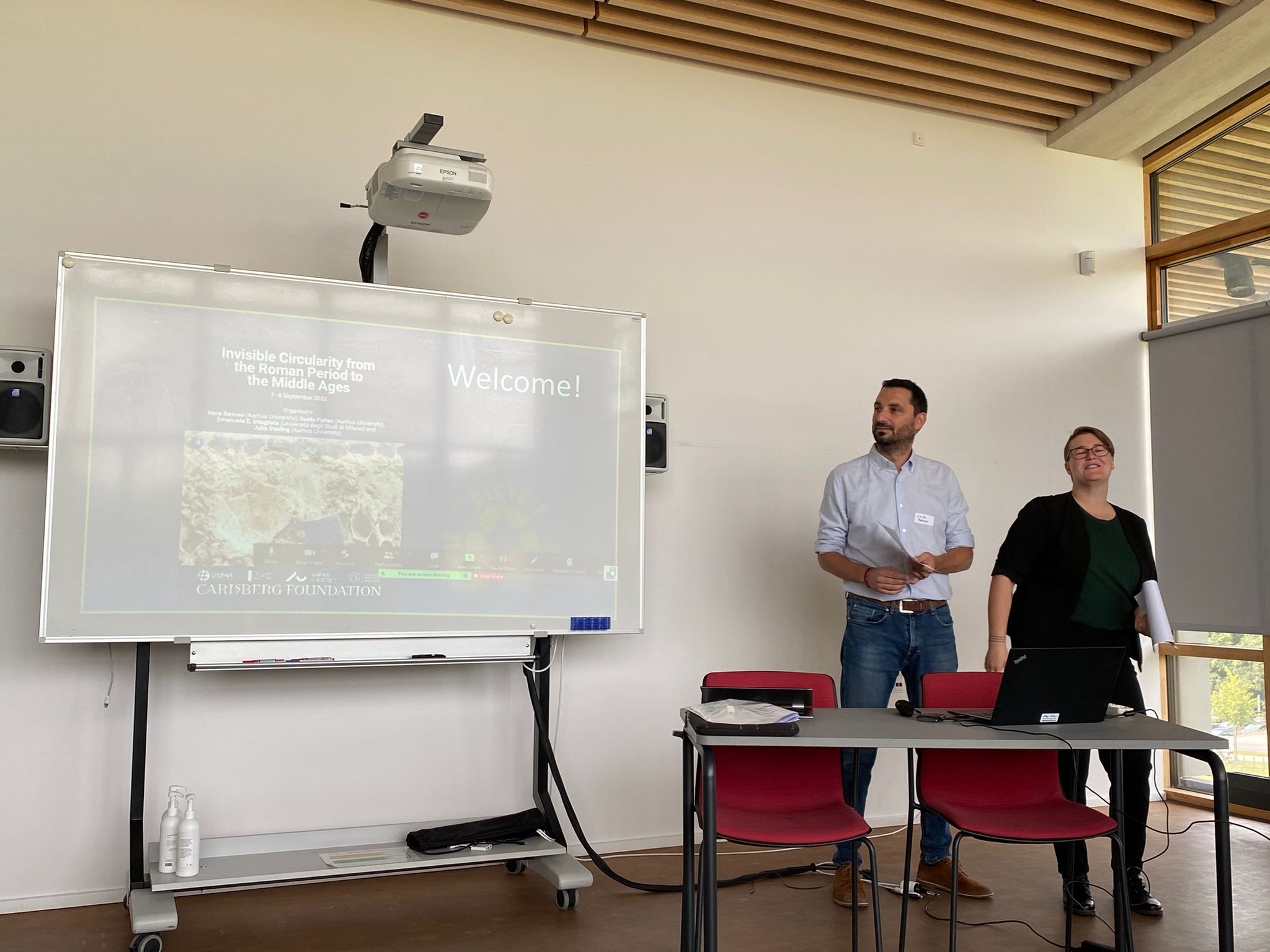Invisible Circularity from the Roman Period to the Middle Ages
Conference summary by postdoc Guido Furlan.

On September 7th and 8th, UrbNet hosted the conference “Invisible Circularity from the Roman Period to the Middle Ages” at Moesgaard Museum. The conference was organized by UrbNet postdocs Irene Bavuso, Guido Furlan, and Julia Steding together with former UrbNet assistant professor and current research fellow Emanuele E. Intagliata (Università degli Studi di Milano).
The conference aimed at grouping specialists in different fields of material studies and history to achieve a more holistic view of circular economies in Roman and Medieval societies. Practices such as secondary use, recycling, maintenance, and refurbishing were challenged from different, often unexpected, perspectives, and with reference to different materials (metalware, glasses, glazes, textiles, ceramics, building materials), whole monuments, and even sites.
Topics such as economic sustainability and the cultural value of reuse were also tackled. Eventually, among the many points of interest that emerged during the very profitable discussion slots, one came through particularly clearly: Circularity has almost always been an integrated part of economic systems. Contemporary “western countries” seem to represent the real exception, as they are rediscovering only very recently the benefits of an approach which was still widespread before the mid-20th century.
The conference was followed, on September 9th, by a spin-off PhD course, “Exploring Reuse Practices in Premodern Economies”, which saw the PhD candidates presenting original case studies and actively engaging with scholars on the topic of reuse.
Throughout three intense days, the feedback was amazing, and we assisted many exciting papers and discussions. An edited volume with the proceedings of the conference is planned for publication later. A huge thank you to all the speakers and all the participants – both those participating in person and online.
